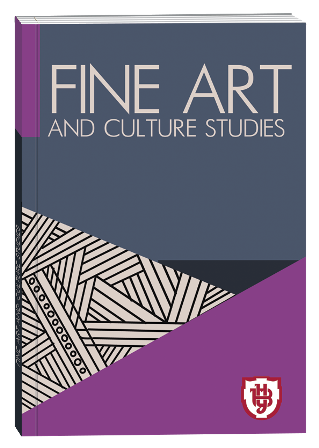AESTHETICS OF GRAFFITI INSCRIPTIONS AS A REFLECTION ON THE VISUAL ENVIRONMENT OF THE CITY
DOI:
https://doi.org/10.32782/facs-2025-2-24Keywords:
graffiti inscriptions, aesthetics, visual environment, industrial city, letter formAbstract
The article examines the practice of aesthetising graffiti inscriptions as a reflection on the industrial era of the twentieth century in the urban environment. The purpose of the study is to investigate the peculiarities of the aesthetics of graffiti inscriptions as a reflection on the visual environment of the city. The methodology is based on a systematic analytical approach. The study applies general scientific (theoretical and empirical) and special art historical methods of scientific knowledge. The integrated use of general scientific theoretical and empirical methods of scientific knowledge made it possible to analyse the visual range of graffiti inscriptions and to study the aesthetics of graffiti inscriptions.The scientific novelty was focused on the fact that graffiti artists see urban space through the prism of certain planes, the rhythm of shapes, lines, and colours that serve as a place to create their inscriptions. This position leads to an active practice of aestheticising the urban environment, which gives the urban space artistic expressiveness, changing its visual appearance and forming new visual accents. In the second half of the twentieth century, there were trends that reflected the crisis of the industrial era in graffiti inscriptions through a specific letter form and the internal content of these inscriptions: deliberate deformation of the letter grapheme, complex interweaving of letter forms, collage or additional decoration of the inscription. The article emphasises the urban context, as it gives graffiti a «street feel». The complex use of general scientific theoretical and empirical methods of scientific knowledge made it possible to analyse the visual range of graffiti works and to explore the aesthetics of inscriptions in the visual environment.Conclusions. Graffiti is becoming a sign of a heterogeneous signal of our time, when artistic styles and urban context are mixed to convey complex cultural and social messages. Such trends lead to a break with traditional forms and the creation of new distorted and often deformed inscriptions, which is a kind of «rebellion against» the urban environment.
References
Головіна Н.І. Естетизація соціального як тенденція сучасності. Філософські обрії. 2016. № 36. С. 111-119
Bates L. Bombing, Tagging, Writing: an analysis of the significance of graffiti and street art. Philadelphia: University of Pennsylvania, 2014. 158 p.
Borriello L., Ruggiero Ch. Inopinatum. The unexpected impertinence of Urban Creativity, Salerno, Italy: ArtiGraficheBoccia, 2013. 256 p.
Ganz N. Graffiti world: street art from five continents. New York: Harry N. Abrams, Inc. 2009. 272 pp.
Gartus A., Leder H. The white cube of the museum versus the gray cube of the street: The role of context in aesthetic valuations, Psychology of Aesthetics. Creativity and the Arts, 2014. 8(3). Рр. 311-320.
Kimvall J. The G-word: Virtuosity and Violation, Negotiating and Transforming Graffiti. Årsta: Dokument Press, 2014. 221 p.
Macdonald N. The Graffiti subculture youth, masculinity and identity in London and New York. New York: Palgrave Macmillan Ltd., 2001. 82 p.
Macdowall L. In Praise of 70K: Cultural Heritage and Graffiti Style. Continuum: The Australian Journal of Media and Culture., 2006. Рр. 471-484.
McAuliffe C., Iveson K. Art and Crime (and Other Things Besides … ), Geography Compass, 2011. 5/3. Pр. 128–143.
Myllylä M. Graffiti as a Palimpsest. SAUC. V4. №2, 2018. Рр. 25-35
Rowe M., Hutton F. Is your city pretty anyway? Perspectives on graffiti and the urban landscape. Australian & New Zealand Journal of Criminology, 2012. 45(1). Р. 66-86.
Sliwa M., Cairns G. Exploring Narratives and Antenarratives of Graffiti Artists: Beyond Dichotomies of Commitment and Detachment. Culture and Organization, 2007. 13:1. Рр. 73-82.
Young A. Judging the Image. Art, value, law. Routledge: Oxon and New York, 2005. Р. 204.
Young A. Art or crime or both at the same time? On the ambiguity of images in public space. Routledge: New York and London, 2017. Рp. 39-53.







